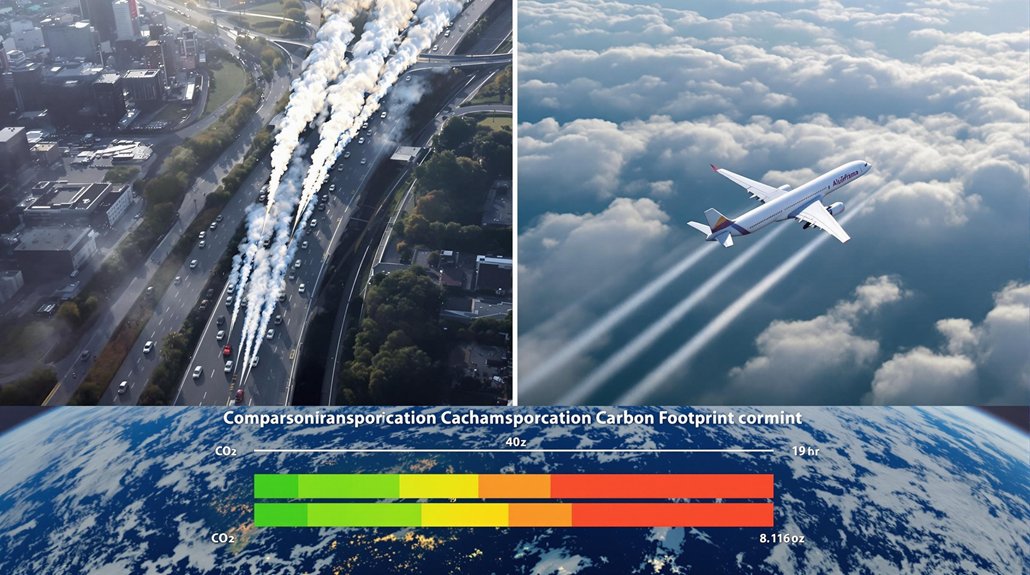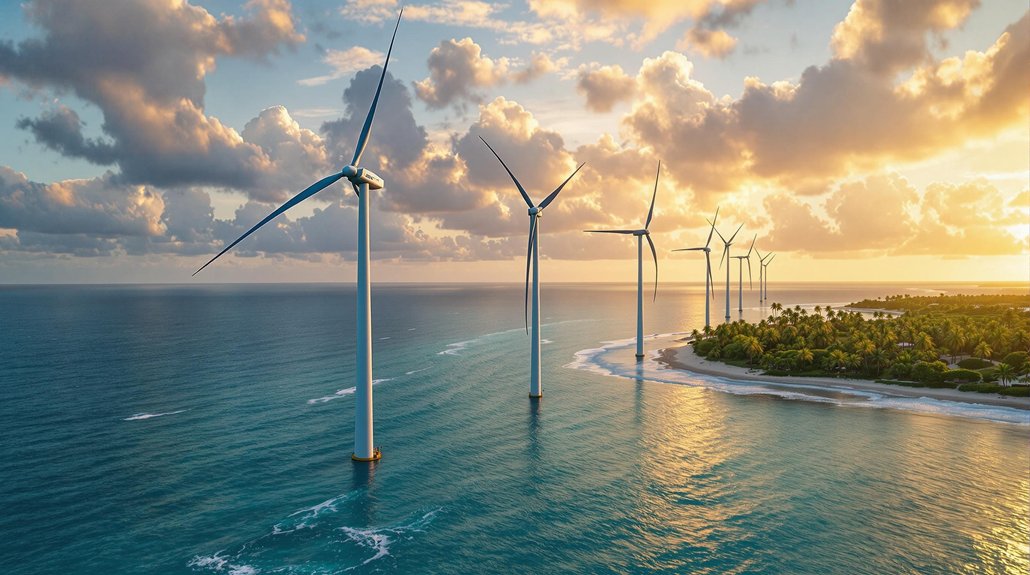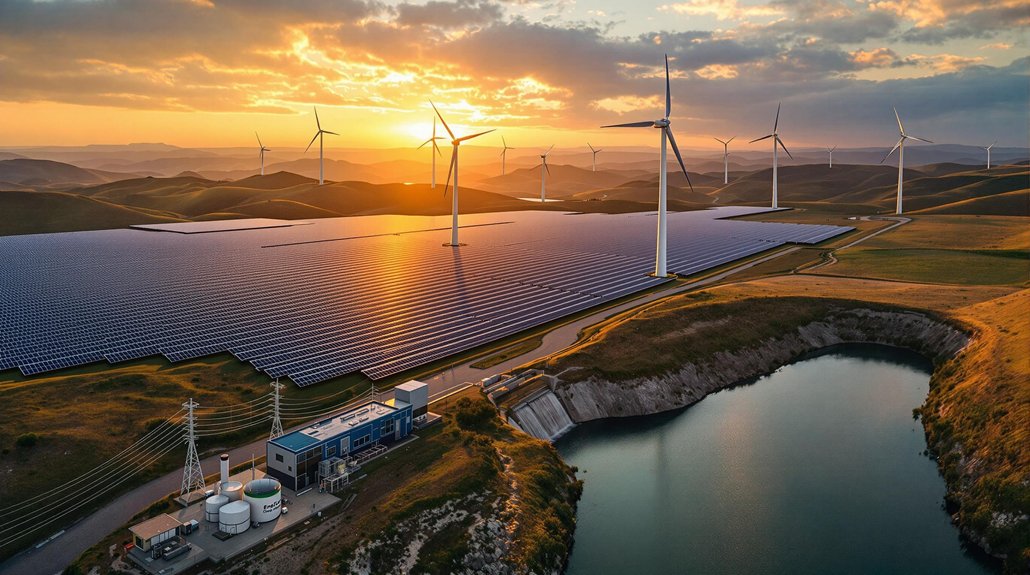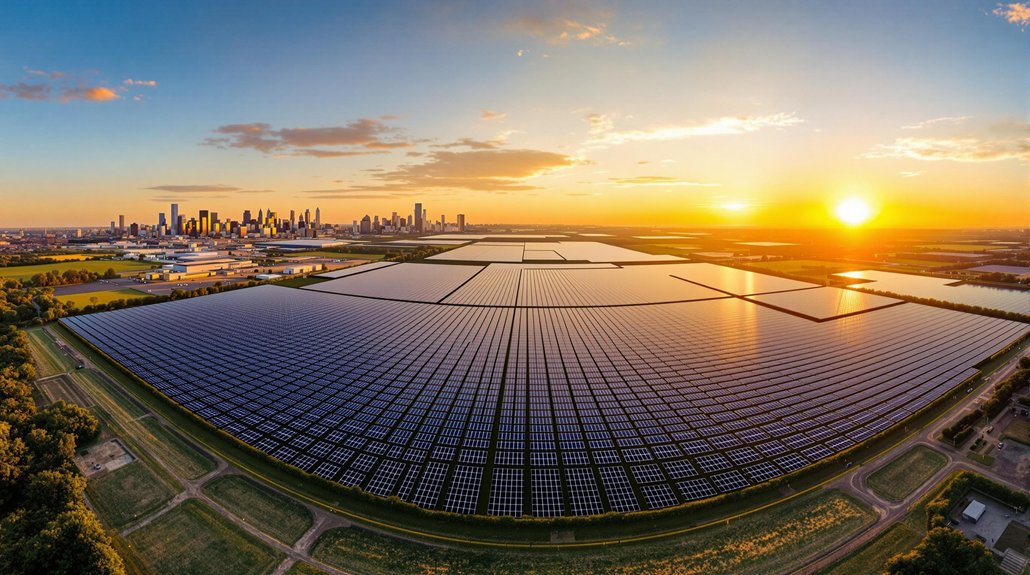The carbon footprint comparison between cars and planes depends on several factors. For trips under 300-400 miles, cars often produce fewer emissions, especially with multiple passengers. Short flights emit 251 grams of CO2 per passenger kilometer versus 171 grams for an average car. However, solo drivers may create more pollution than flying on longer journeys. Electric vehicles and trains offer considerably lower-emission alternatives. The full environmental picture involves more than just distance.

When travelers choose between driving or flying to their destination, they’re also making a choice about their environmental impact. Recent data shows that short flights produce 251 grams of CO2 per passenger kilometer, while long flights emit about 150 grams. In comparison, an average car emits 171 grams of CO2 per passenger kilometer, placing it between short and long flights regarding emissions.
The environmental equation changes markedly depending on several factors. Distance matters—planes burn more fuel during takeoff and landing, making short flights less efficient per mile than longer ones. For road trips under 300-400 miles, driving often produces fewer emissions than flying, especially with multiple passengers in the car.
Distance matters: shorter flights produce more emissions per mile, making driving the greener choice for trips under 400 miles.
Vehicle occupancy plays a vital role in determining the greener option. A car with 2-3 passengers typically generates lower emissions per person than the same journey by plane. However, solo drivers on long trips may create a larger carbon footprint than if they had flown instead. Air conditioning usage in cars can also raise CO2 emissions by 7-20%. Public transportation options like trains and buses offer eco-friendly alternatives to both cars and planes for many journeys. Aviation’s impact on global warming is amplified by non-CO2 emissions including nitrogen oxides and soot particles released at high altitudes.
Electric vehicles dramatically improve the equation, producing only 53 grams of CO2 per passenger kilometer.
Transportation contributes considerably to global emissions, accounting for 24-28% of worldwide CO2. Road vehicles create three-quarters of transport emissions, while aviation is responsible for 11.6%. Notably, rail travel produces just 1% of transport emissions, making trains the clear winner for medium-distance travel.
Current trends show aviation emissions growing faster than other transport sectors. Meanwhile, increasing electric vehicle adoption is beginning to reduce road transport emissions. The transportation industry is responding with more fuel-efficient aircraft designs and sustainable aviation fuels, while carmakers shift toward electric vehicle production.
Governments worldwide are implementing policies to address transport emissions. The EU aims to cut transport emissions by 90% by 2050. Carbon pricing schemes now impact travel costs, and government incentives promote low-emission vehicle adoption.
These combined efforts may reshape the car-versus-plane calculation in the coming years as both industries work to reduce their environmental impact.
Frequently Asked Questions
How Do Electric Planes Compare to Traditional Planes Environmentally?
Electric planes produce zero direct emissions during flight, unlike traditional aircraft that release carbon dioxide.
They’re 2-3 times more energy efficient and can reduce CO2 emissions by 49-88% compared to fossil-fueled planes.
They’re also quieter, reducing noise pollution.
However, electric planes currently have limited range (140-280 km) and their batteries account for most of their environmental impact during production.
Does Flying First-Class Increase My Carbon Footprint?
Flying first-class considerably increases a passenger’s carbon footprint.
Premium seats take up more space, reducing the number of travelers per flight. First-class emits up to 9 times more carbon dioxide than economy, while business class produces 2.6-4.3 times more.
Though premium travelers represent only 5% of passengers, they account for about 30% of aviation emissions.
The larger seats, extra amenities, and increased baggage allowance all contribute to higher fuel consumption.
Do Carbon Offset Programs Actually Work for Air Travel?
Carbon offset programs for air travel show mixed results.
Recent studies indicate many fail to deliver promised emissions reductions. Problems include inaccurate measurements, double-counting, and funding projects that would have happened anyway.
While over 30 airlines offer offset options, the prices are typically too low to create meaningful impact.
Major carriers like United and Delta have shifted away from offsets toward sustainable aviation fuel and efficiency improvements instead.
How Will Future Fuel Technologies Affect Transportation Emissions?
Future fuel technologies will greatly reduce transportation emissions.
Electric vehicles using cleaner batteries are expected to make up 30% of new car sales by 2030.
Hydrogen fuel cells, emitting only water vapor, are gaining traction for heavy transport.
Sustainable aviation fuels could cut aircraft emissions by up to 80%.
Advanced biofuels from non-food sources offer an 80%+ reduction in emissions for existing engines.
These innovations are expanding globally with increasing investment.
What’s the Carbon Impact of High-Speed Rail Versus Cars or Planes?
High-speed rail produces considerably less carbon than cars or planes.
Studies show trains emit around 35g of CO2 per passenger kilometer, compared to 246g for domestic flights. That’s 14-16 times lower emissions.
Electric high-speed trains could cut emissions by 23% versus short-haul flights.
The environmental advantage is greatest for trips between 200-1000 km.
California’s planned high-speed rail will run entirely on renewable energy.









